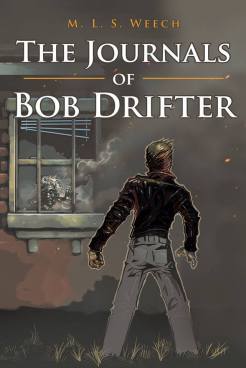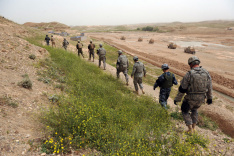The Influence of Life on Art
One of the more common questions I get is “Which of your characters is most like you?” I’ve heard other authors talk about this with varying degrees of frustration. I’m not exactly sure, exactly, what the consensus feeling is, but some authors don’t like the idea that the characters they create are based on someone (or at least just one person). I’ve discussed how I develop characters, and it’s absolutely true that they all have some pieces of lots of people I know, but no one character is simply a representation of any one person. I’m frankly too afraid of appropriation lawsuits.
A lot of my friends mention that reading my book was odd because they saw so much of me in my books. I don’t mind that so much, but that’s because I always give my characters some part of myself.
There’s a common phrase in the world of writing: Write what you know. Now, in Fantasy, this seems much more difficult when you consider ancient worlds and other races. Still, the simple fact is the life you live has an impact on the worlds you create. While I normally like to do case studies, I just don’t have enough knowledge on other authors to speak. At best, I have a few vague recollections. I believe this to be true about most authors, and to show it, I’ll talk about how my life has effected my art.
 In The Journals of Bob Drifter, the most direct things I pulled from my life are locations and occupations. Patience is a photographer because I’m a photographer. I understood the field, and it worked for the story. Bob is a substitute teacher. The trick he used when he first met David is the same trick I used to gain my classes’ attention as a substitute. The fact that Bob looks a lot like me is coincidental. I had a buzz-cut hairstyle pretty much the last 15 years of my life. I grew it out recently. I was at an event when someone showed me the cover and said, “Is that you?” No. While Bob has my background in education, the similarities in hair are about all we have in common. I have family near Surprise, Arizona. I was stationed in San Diego and Syracuse while I served in the Navy. I took these locations because they were familiar. It made it easier for me to write since I could actually remember some of these locations.
In The Journals of Bob Drifter, the most direct things I pulled from my life are locations and occupations. Patience is a photographer because I’m a photographer. I understood the field, and it worked for the story. Bob is a substitute teacher. The trick he used when he first met David is the same trick I used to gain my classes’ attention as a substitute. The fact that Bob looks a lot like me is coincidental. I had a buzz-cut hairstyle pretty much the last 15 years of my life. I grew it out recently. I was at an event when someone showed me the cover and said, “Is that you?” No. While Bob has my background in education, the similarities in hair are about all we have in common. I have family near Surprise, Arizona. I was stationed in San Diego and Syracuse while I served in the Navy. I took these locations because they were familiar. It made it easier for me to write since I could actually remember some of these locations.
I want to be clear about my role in the Navy. I served as a combat photographer. While some of my friends saw combat, and even earned recognition for their actions in combat, I didn’t see any. However, I certainly trained a lot. That training was put to use in Caught while writing the scenes involving Oneiros. None of this is stuff you couldn’t learn by watching Act of Valor, but it helped me have something to draw from.
While stationed in San Diego, I did a lot of volunteer work. I did some work with the homeless, and was shocked to hear that, as of 2010, there were 1,200 homeless veterans in the city of San Diego alone. This became the inspiration for another book.
Now for the other side of the coin.
 I took this image while serving in Afghanistan. It was shot as part of my official duties and, as such, is public domain.
I took this image while serving in Afghanistan. It was shot as part of my official duties and, as such, is public domain.I expect most authors pull from what they know. It adds realism and makes world-building easier, but there is a line. It’s poorly defined and depends more on the author than any actual rules. I’ve been to Afghanistan. I know what the weather is like. I know the road conditions. But I didn’t take actual locations. First off, my memory (while, in my opinion is pretty darn good, isn’t good enough to remember any one of the dozens of locations I visited in the six months I was there.
I mentioned Kirkuk Iraq in another book, but only as a location. Appropriation is a real privacy rights violation and something I take seriously. Locations are one thing, people are far more important. Yes, I usually take a TRAIT or two from people I know, but I have not (well..not since I was 13 and clueless) nor will not ever simply take someone I know and make them into a character. The closest I came was an old chief of mine. I spoke to him about it. While they look nothing alike and their situations in life are not even remotely similar, the trait I gave this character is what most would know my old chief for. The point is, I felt so strongly that I approached him and discussed the matter with him.
The balance between writing what you know and creating what you can create is an art in and of itself. Let me end with a few dos and don’ts.
 I captured this image while serving in Kirkuk, Iraq. This image is also public domain.
I captured this image while serving in Kirkuk, Iraq. This image is also public domain.Do: Use what you know to draw from. Your careers, hobbies, and interests can make for wonderful world building tools. Don’t be afraid to put them to use.
Do: Use locations and cultures with which you are familiar. It’s important to build a life-like world or use real-world locations in ways that help the reader gain a more visceral experience.
Don’t: Use real people without their expressed written permission. If that sounds like the end of a football game, it should. Now, some people enter contests specifically to be put in books. The very act of entering said contest waves a persons right to having their likeness used fictitiously.
Don’t: Use real scenes. This is debatable. The point is it’s close to the line, and I tend to avoid things like that. If I write about a restaurant in San Diego, I make sure I’m using that fictitiously, and it’s not fictionalized in an unflattering way. (At least I make every effort to do that). If I can make up a place, I do. There may indeed be a restaurant in San Diego at the location I offer, but if there is, I didn’t know it was there. So long as the location is simply used as a setting, I’m not OVERLY worried, but if I have any other way to do it, I will, especially if I’m looking for a “seedy” location or something of the sort. If I write information that’s accurately portraying the location, I’m safe, but accuracy becomes my friend. At the end of the day, if you’re worried about it, if you feel a little weird about it, don’t do it.
If you’re an author, and you want to provide your thoughts, please feel free to do so in the comments section.
Thanks for reading,
Matt





